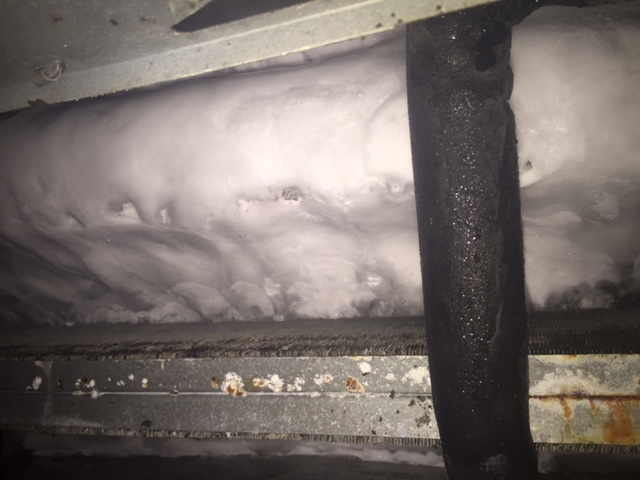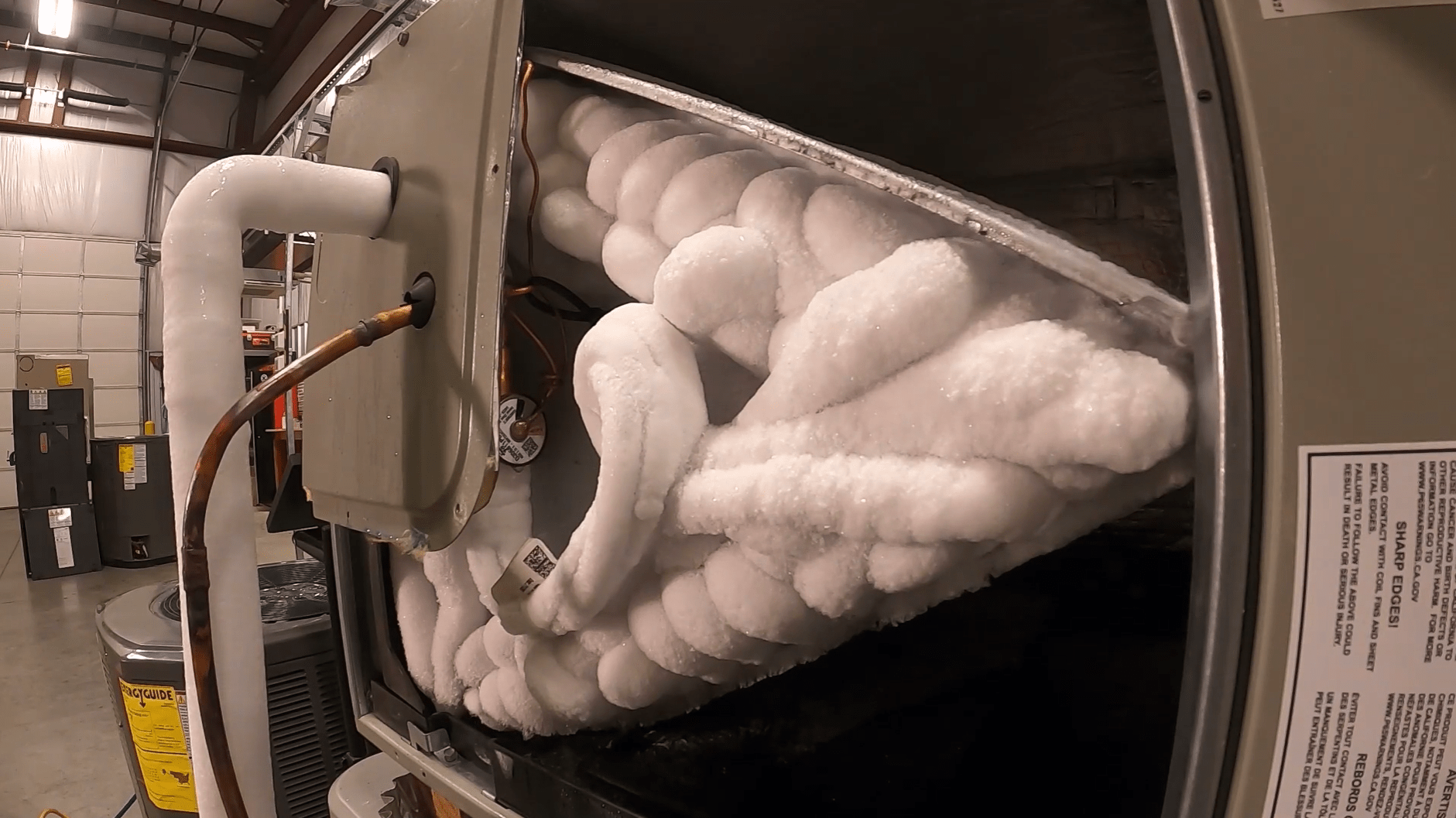Managing a Frozen AC Pipe: Professional Guidance
Managing a Frozen AC Pipe: Professional Guidance
Blog Article
They are making several good pointers on How can I fix an air conditioner’s frozen pipe? as a whole in the content following next.

Intro
Uncovering that your a/c pipe is frozen can be worrying, particularly during warm summer months when you count on your air conditioning system the most. Understanding what to do in such a circumstance is critical to prevent further damage to your cooling system and ensure your comfort inside.
Understanding the Causes
Several elements can add to the cold of an air conditioner pipe. Recognizing these causes can aid you deal with the concern properly.
Absence of Airflow
One typical root cause of an icy a/c pipe is inadequate airflow. When the air movement over the evaporator coil is restricted, it can create the coil to drop below freezing temperature, bring about ice formation on the pipeline.
Reduced Refrigerant Levels
Insufficient cooling agent levels in your air conditioner system can also cause a frozen pipe. Reduced refrigerant degrees can create the stress in the system to drop, causing the cold of moisture on the evaporator coil.
Cold Weather Conditions
In cooler climates, freezing temperature levels outside can contribute to the freezing of a/c pipelines. If your air conditioner unit is not correctly insulated or if there are leakages in the ductwork, cool air can penetrate the system, causing the pipeline to ice up.
Dirty Air Filters
Dirty or clogged air filters can limit air movement in your a/c system, bring about various issues, including an icy pipeline. It's essential to replace or cleanse your air filters regularly to guarantee appropriate air movement and protect against ice accumulation.
Signs of a Frozen A/c Pipe
Identifying the signs of a frozen a/c pipeline is essential for timely action.
Minimized Airflow
If you see a substantial decline in air movement from your vents, it can show an icy pipeline.
Ice Buildup on the Pipe
Noticeable ice accumulation on the refrigerant line or the evaporator coil is a clear indication of an icy air conditioner pipeline.
Unusual Sounds from the Unit
Unusual audios, such as hissing or gurgling, coming from your AC device can indicate that there's ice present on the pipeline.
Immediate Actions to Take
When faced with an icy air conditioning pipeline, it's important to act rapidly to stop further damages to your cooling system.
Shutting off the AC
The primary step is to turn off your air conditioner to avoid the system from running and aggravating the issue.
Checking for Blockages
Check the location around the interior device for any type of blockages that might be blocking air movement, such as furniture or drapes.
Defrosting the Pipe
You can utilize gentle methods like positioning towels taken in cozy water around the frozen pipeline to aid thaw it slowly.
Safety nets
Taking preventive measures can help prevent future events of an icy AC pipeline.
When DIY Methods Fail
If your efforts to thaw the pipe or address other issues are not successful, it's time to call in a specialist.
Relevance of Hiring a Professional HVAC Technician
A licensed HVAC specialist has the competence and tools needed to diagnose and fix issues with your a/c system securely and successfully.
Normal Maintenance Checks
Arrange routine upkeep talk to a specialist HVAC technician to make sure that your air conditioner system is running efficiently.
Changing Air Filters
On a regular basis change or cleanse your air filters to prevent airflow restrictions and maintain optimal performance.
Insulating Exposed Pipes
If your AC pipelines are revealed to chilly temperatures, think about insulating them to prevent cold throughout winter months.
Seeking Professional Help
If DIY methods fall short to deal with the issue or if you're unsure concerning how to proceed, it's ideal to seek support from a certified HVAC professional.
Conclusion
Handling a frozen a/c pipe can be an aggravating experience, but recognizing how to respond can assist decrease damage and bring back convenience to your home. By recognizing the causes, recognizing the indications, and taking timely activity, you can properly address the issue and avoid future incidents.
G UP? HOW TO FIX IT?
It happens all over America. And the rest of the world probably. It’s the hottest day ever and for some darn reason your AC isn’t cooling the house. You fiddle with the thermostat to try and fix the problem. Nada. All you can do now is go outside and check the AC unit. You make your way there and find your air conditioner unit is frozen! But how?
In this post we’ll cover how you can tell that your air conditioner has frozen (other than the obvious reasons), what could have caused the freeze, and some of the things you can do about your AC freezing up. And if you have a frozen heat pump condenser, read our blog about it to learn what to do! But remember, it is always best to avoid your AC freezing up with an AC tune up. And if you are moving into a home, it's critical to get HVAC inspection so that you are aware of an AC problems before you move in.
Keep reading and you may be able to fix the frozen AC yourself. If you can’t, call an HVAC specialist. If you live in Maryland, call SuperTech HVAC for AC repair. We’ll take care of it.
How Does An Air Conditioning Unit Work?
How you probably imagine an AC works is wrong. Contrary to popular belief, an AC system does not inject cool air into a building. Instead, it removes the heat from inside and transfers it outside. Cool huh? (Pun intended).There are 4 major components among the 3 stations of an air conditioning system: the evaporator coil, the compressor, the condenser, and the refrigerant – a special chemical that links everything together through a closed loop system.
Station 1:
Warm indoor air is sucked into the return vent, through a filter, and blows over the evaporator coil. The heat is absorbed into the cold refrigerant, turning it from liquid to gas. The air, which is now cool, is blown back into the home to areas that your thermostat, i.e. you, has decided.
Station 2:
The refrigerant makes its way outside the house to the compressor, which squeezes the warm refrigerant, raising its gaseous temperature even more.
Station 3:
When the super hot vapor refrigerant reaches the condenser, the last step, the heat is expelled and absorbed into the outdoor air. The refrigerant instantly cools, which changes it from gas back to liquid form. The cold liquid refrigerant is now ready to return to station 1 and repeat the process.
Is Your AC Freezing Up? Here Are The Signs:
As you may have guessed, your air conditioner unit freezing up on a hot day is not normal.
If this happens, there's no need to panic. Often the issue can be solved with a little troubleshooting. If the AC unit is left frozen for too long however, you may find yourself with a bigger problem.
First things first, how do you know your AC is frozen?
Well, the obvious sign is the ice on your refrigerant line-set pipe. Simply check between your outdoor AC unit and your home's exterior wall to see whether your AC line frozen.
You might also have a frozen evaporator coil. This one's not as easy to check. You'll need to open a panel on the indoor unit to inspect. Don't do this unless you're handy. If you aren't, call an HVAC pro like SuperTech HVAC or you may damage something in the process.

I'm certainly very taken with What Do I Do If My AC Pipe Is Frozen and I really hope you liked our entry. For those who appreciated our blog entry if you please be sure to share it. Thanks for taking the time to read it.
Click Here Report this page